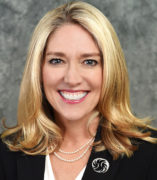Burnout: Going Beyond Mindfulness to Interprofessional & Policy Solutions

Open your email, an academic journal, or even a newspaper, and you will likely find an article on physician burnout.
Headlines such as “The Burnout Crisis in American Medicine,” “The Widespread Problem of Doctor Burnout,” and “Physician Burnout Rates Reach All-Time High” have become commonplace. You may even hit “delete” without reading past the title. However, today’s blog is to encourage you to pay attention to the topic of burnout and be “a force in the call to action” for what is truly a public health crisis.
Burnout is characterized by a high degree of emotional exhaustion, depersonalization and a low sense of personal accomplishment from work.1 As many as 78% of physicians report symptoms of burnout.2 In addition, physicians report high rates of depression and drug and alcohol abuse. More than 400 physicians die each year by suicide—at a rate more than two times higher than the general population.3
But physicians are not the only ones battling burnout.
Nurses, pharmacists, and social workers are all experiencing higher rates of burnout than ever before. Data also show that burnout even extends to our students and trainees.
As I was preparing for a talk I was giving at the recent CHEST annual meeting, I came across an article with data showing high rates of burnout in critical care fellows. Third-year fellows (those closest to graduation) had the highest rates of burnout.4 Something is clearly wrong when they are burned out at a time when they should be at the height of excitement to embark on their profession. They are burned out before they even begin!
While I have not found burnout data specifically for nurse practitioners and physician assistants, based on what I did find about our health care colleagues, it is highly likely our specific professions also suffer from this major professional, personal, and public health crisis.
Burnout not only wreaks havoc on the lives of providers and their families, but also has a major impact on quality of care and patient safety.
Burnout is associated with lower levels of patient satisfaction and reduced adherence to treatment plans.5,6 Burnout is also associated with an increased risk of medical errors.7 Burnout is an independent predictor of reporting a major medical error and being involved in a malpractice suit.1 In addition, health care provider turnover due to burnout has negative financial implications for health care organizations. Studies have also linked the possibility of physicians experiencing burnout or high workloads to making more referrals and ordering more tests.8,9
Burnout also plays a role in career advice to future generations. In a recent survey, seven out of ten physicians were unwilling to recommend health care as a profession.10 On a personal note, my husband of 25 years (a 30-year veteran of pulmonary critical care/ICU medicine) was distraught when our son came home announcing he had applied to medical school. This happened to be the same day an article was published in Academic Medicine stating that residents spent less than 10% of a day shift interacting with patients, and over 50% interacting with computers.11 Electronic medical records are one of the top contributors to burnout.12 Other factors are also in play: inadequate time with patients, high patient numbers, malpractice concerns, dealing with payers, student loan debt, physical and emotional stress and work-life imbalance.
So what are our professions to do?
While articles have been published encouraging providers to practice mindfulness, the onus should not be on the individual provider but should be dealt with at the organizational and system levels. Although yoga, meditation, and other self-care practices are linked to individual physical and mental well-being, dealing with the root cause of burnout needs to be done at a much larger level. Spearheading this initiative is the National Academy of Medicine (NAM), who recently launched an Action Collaborative on Clinician Well-Being and Resilience, is conducting research in this area, has an online resource kit focused on clinician well-being, and has released several discussion papers on clinician well-being and burnout.13
As a voice for NPs, I was asked to participate in NAM’s two-day collaborative, Establishing Clinician Well-Being as a National Priority, in May this year in Washington, DC. Subsequently, I was a contributor to the NAM discussion paper titled “Implementing Optimal Team-Based Care to Reduce Clinician Burnout.”14 Team-based care has been linked to improved patient outcomes and may mitigate burnout. Although more research is needed, high-functioning teams have great potential to promote clinician well-being, which is imperative to quality health care.
While correcting the root causes of burnout is clearly not easy, we can work now toward workflow re-design to include highly functioning teams and an interprofessional, collaborative, team-based approach to care.
Because NPs and PAs frequently practice in teams, we are well positioned to be leaders in ensuring high-functioning teams as part of workflow re-design, with the overarching goals of improving quality of care and clinician well-being. In addition, working with our national NP and PA organizations to advocate for policies that focus on the quadruple aim (quality, patient experience, cost, and provider well-being) is imperative to the future of health care.
References:
- Dyrbye LN, Shanafelt TD, Sinsky CA, et al. Burnout among health care professionals: A call to explore and address this underrecognized threat to safe, high-quality care. NAM Perspectives. 2017.
- The Physicians Foundation. 2018 survey of america’s physicians: Practice patterns & perspectives. 2018; https://physiciansfoundation.org/wp-content/uploads/2018/09/physicians-survey-results-final-2018.pdf.
- Andrew LB, Brenner BE. Physician suicide. Medscape 2018; https://emedicine.medscape.com/article/806779-overview.
- Kashani K, Carrera P, De Moraes AG, Sood A, Onigkeit JA, Ramar K. Stress and burnout among critical care fellows: Preliminary evaluation of an educational intervention. Med Educ Online. 2015;20:27840.
- McHugh MD, Kutney-Lee A, Cimiotti JP, Sloane DM, Aiken LH. Nurses’ widespread job dissatisfaction, burnout, and frustration with health benefits signal problems for patient care. Health affairs (Project Hope). 2011;30(2):202-210.
- Dyrbye LN, Massie FS, Jr., Eacker A, et al. Relationship between burnout and professional conduct and attitudes among us medical students. Jama. 2010;304(11):1173-1180.
- Shanafelt TD, Balch CM, Bechamps G, et al. Burnout and medical errors among american surgeons. Ann Surg. 2010;251(6):995-1000.
- Kushnir T, Greenberg D, Madjar N, Hadari I, Yermiahu Y, Bachner YG. Is burnout associated with referral rates among primary care physicians in community clinics? Fam Pract. 2014;31(1):44-50.
- Bachman KH, Freeborn DK. Hmo physicians’ use of referrals. Social science & medicine. 1999;48(4):547-557.
- The Doctors Company. The future of healthcare: A national surevy of physicians. 2018; https://www.thedoctors.com/contentassets/23c0cee958364c6582d4ba95afa47fcc/11724b_fohc-survey_0918_nomarks_spread_fr-1.pdf.
- Mamykina L, Vawdrey DK, Hripcsak G. How do residents spend their shift time? A time and motion study with a particular focus on the use of computers. Acad Med. 2016;91(6):827-832.
- Collier R. Electronic health records contributing to physician burnout. CMAJ : Canadian Medical Association journal = journal de l’Association medicale canadienne. 2017;189(45):E1405-E1406.
- National Academy of Medicine. Action collaboration on clinician well-being and resilience. 2018; https://nam.edu/initiatives/clinician-resilience-and-well-being/.
- Smith CD, Balatbat C, Corbridge SJ, et al. Implementing optimal team-based care to reduce clinician burnout. 2018; https://nam.edu/implementing-optimal-team-based-care-to-reduce-clinician-burnout/.





Leave a comment